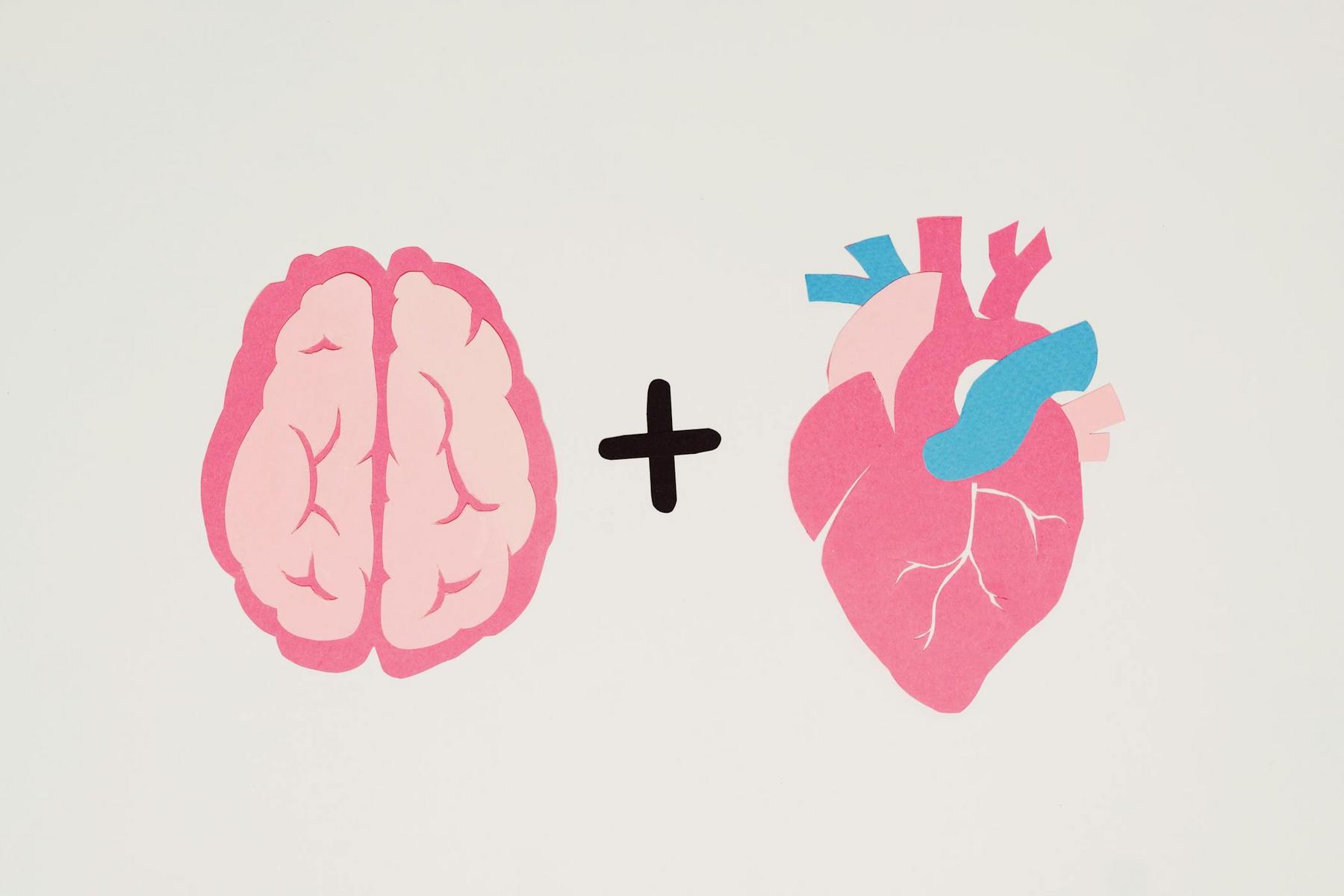More than one in six Australians experience anxiety disorders each year, making these conditions the most prevalent mental health challenges in our nation. Yet despite their widespread occurrence, anxiety disorders remain deeply misunderstood, often dismissed as simple nervousness or stress rather than recognised as complex neuropsychiatric conditions that profoundly impact every aspect of human functioning. The statistics paint a sobering picture: approximately 2.3 million Australians currently live with anxiety disorders, with young adults aged 16-24 experiencing the highest rates at nearly 39% annually. These figures represent not merely numbers on a page, but millions of individuals struggling with excessive fear, persistent worry, and debilitating avoidance behaviours that can transform everyday activities into overwhelming challenges.
The journey of understanding anxiety begins with recognising that these disorders extend far beyond occasional worry or pre-performance jitters. Anxiety disorders represent a sophisticated interplay of neurobiological dysfunction, cognitive distortion, and behavioural adaptation that creates self-perpetuating cycles of distress and impairment. For the countless Australians affected by these conditions—whether personally or through loved ones—developing a comprehensive understanding of anxiety’s various manifestations becomes essential for recognising when professional support may be needed and for reducing the stigma that often prevents individuals from seeking appropriate care.
What Defines Anxiety Disorders and Their Clinical Significance?
Understanding anxiety disorders requires distinguishing between normal, adaptive anxiety responses and pathological anxiety that significantly impairs daily functioning. Anxiety disorders constitute a heterogeneous group of psychiatric conditions fundamentally characterised by excessive fear and anxiety, accompanied by related behavioural disturbances that persist beyond what would be considered proportionate to actual threats or circumstances.
The clinical definition of anxiety disorders has evolved considerably through advances in psychiatric classification systems, particularly the Diagnostic and Statistical Manual of Mental Disorders, Fifth Edition (DSM-5), which recognises eleven distinct anxiety disorder categories. These conditions represent a departure from normal protective anxiety responses, instead manifesting as persistent, disproportionate reactions to perceived threats that may be minimal or entirely absent.
The pathophysiological foundations involve complex interactions between neurobiological systems, particularly those governing fear processing and threat detection mechanisms. Research demonstrates dysregulation in neural circuits connecting the amygdala, prefrontal cortex, and other brain regions responsible for emotional processing and cognitive control. This neurobiological dysfunction manifests as biased information processing, where individuals demonstrate heightened sensitivity to potential threats and negative interpretations of ambiguous stimuli.
The cognitive component of anxiety disorders represents one of their most distinctive features, exhibiting as distorted threat perception and selective attention to potentially dangerous situations, even when objective assessment reveals minimal actual risk. This cognitive bias creates a self-reinforcing cycle where anxiety-provoking thoughts generate physical symptoms, which are then interpreted as evidence of danger, further escalating the anxiety response.
The clinical significance extends far beyond immediate psychological symptoms, encompassing substantial impacts on physical health, social functioning, and economic productivity. Patients with anxiety disorders demonstrate significantly higher rates of healthcare utilisation, with primary care providers reporting that these individuals are more likely to present with unexplained somatic symptoms and chronic medical conditions. The bidirectional relationship between anxiety disorders and physical health manifests through chronic activation of stress response systems, immune dysfunction, and cardiovascular strain.
What Are the Major Types of Anxiety Disorders?
The landscape of anxiety disorders encompasses several distinct categories, each characterised by unique symptom profiles, triggers, and clinical presentations that require specific diagnostic considerations and treatment approaches.
Generalised Anxiety Disorder
Generalised Anxiety Disorder (GAD) represents one of the most prevalent anxiety conditions, characterised by persistent, excessive worry occurring on most days for at least six months, causing significant distress or functional impairment. The diagnostic hallmark of GAD involves worry that extends across multiple life domains—work performance, family relationships, financial security, health concerns—with individuals finding this worry difficult to control despite reassurance or contradictory evidence.
The phenomenological characteristics distinguish GAD through its broad, generalised focus rather than situation-specific fears. Individuals typically experience catastrophic thinking patterns, intolerance of uncertainty, and negative feedback sensitivity that contributes to symptom maintenance. The somatic manifestations include muscle tension, particularly affecting the neck, shoulders, and back, alongside headaches, fatigue, gastrointestinal disturbances, and sleep disruption.
Panic Disorder
Panic Disorder involves recurrent, unexpected panic attacks characterised by discrete episodes of intense fear reaching peak intensity within minutes. The diagnostic criteria require persistent concern about additional attacks, worry about attack implications, or significant behavioural changes related to the attacks persisting for at least one month.
During panic attacks, individuals experience rapid onset of intense physical symptoms including heart palpitations—the most commonly reported symptom—chest pain, shortness of breath, dizziness, sweating, trembling, nausea, and cognitive symptoms including fears of dying, losing control, or detachment from reality. The unpredictable nature creates anticipatory anxiety, where individuals develop persistent worry about when and where attacks might occur, often leading to agoraphobic avoidance behaviours.
Social Anxiety Disorder
Social Anxiety Disorder, or social phobia, involves extreme fear of social situations where individuals may face criticism, scrutiny, or evaluation by others. The condition requires marked fear persisting for at least six months, with anxiety disproportionate to actual threat levels and consistently provoking immediate anxiety responses.
Common feared situations include public speaking, meeting new people, eating in public, attending social gatherings, and participating in group conversations. The central organising feature involves fear of negative evaluation, where individuals fear acting in humiliating or embarrassing ways, or that others will notice their anxiety symptoms and judge them negatively. This cognitive bias toward threat detection in social contexts contributes to maintenance of social fears and progressive avoidance behaviours.
Specific Phobias
Specific phobias represent the most prevalent anxiety disorders, involving intense, irrational fears of specific objects or situations leading to immediate anxiety responses and avoidance behaviours. The classification system recognises five primary subtypes: animal-type (spiders, snakes, insects), natural environment (storms, heights, water), blood-injection-injury (medical procedures, needles, blood), situational (flying, driving, enclosed spaces), and other categories.
The degree of functional impairment varies significantly depending on how commonly the phobic stimulus appears in daily life, ranging from mild inconvenience for specific animal phobias to severe occupational and social limitations for driving or flying phobias. Behavioral consequences typically involve elaborate avoidance strategies designed to prevent contact with feared stimuli.
Agoraphobia and Separation Anxiety
Agoraphobia involves fear of situations where escape might be difficult or help unavailable during panic-like symptoms, requiring marked fear of at least two situations: public transportation, open spaces, enclosed spaces, crowds, or being outside home alone. The condition can develop independently of panic disorder, maintained by fears of various incapacitating symptoms beyond panic.
Separation Anxiety Disorder involves excessive fear about separation from major attachment figures, inappropriate for developmental level, persisting at least four weeks in children and six months in adults. Previously considered only a childhood condition, recognition of adult presentations has important implications for understanding attachment-related anxiety across the lifespan.
How Do Anxiety Characteristics Manifest Across Different Age Groups?
Understanding anxiety across the lifespan reveals fundamental differences in symptom presentation, recognition challenges, and treatment considerations that reflect developmental variations in cognitive processing, emotional regulation, and communication abilities.
Childhood Presentations
Children cannot process their environment in the same ways as adults because their cognitive functioning is not fully developed, affecting how their minds identify and respond to potential threats. This developmental limitation means children often do not recognise when fear reactions become irrational, experiencing only immediate emotional and physical sensations without cognitive frameworks for understanding their anxiety.
Childhood anxiety symptoms frequently manifest through behavioural changes rather than direct verbal reports, including frequent nightmares, constant restlessness potentially misinterpreted as hyperactivity, excessive sleepiness in school settings, concentration difficulties affecting academic performance, and increased irritability straining relationships. Communication challenges create diagnostic complexities, as children have difficulty vocalising feelings compared to adults who can verbally acknowledge anxiety experiences.
Adolescent Development
The adolescent period represents a critical stage for anxiety disorder emergence, with research indicating half of all mental health disorders begin during childhood and adolescence. Australian data demonstrates particularly high rates among adolescents, with anxiety affecting approximately 6.9% of children and adolescents, representing the second most common mental health condition after ADHD.
Social anxiety disorder shows particular prominence during adolescence, coinciding with developmental periods when peer relationships and social evaluation become increasingly important aspects of identity formation. The heightened social awareness characteristic of adolescence can trigger or exacerbate social anxiety symptoms, leading to academic difficulties and impaired peer relationships often coinciding with major transitions like starting high school.
Adult Characteristics
Adult presentations demonstrate distinctive features reflecting mature cognitive processing abilities, established coping patterns, and accumulated life experiences. Adults generally demonstrate better ability to recognise and verbalise anxiety experiences, providing detailed descriptions of worries, physical symptoms, and functional impairments facilitating accurate diagnosis.
The symptom presentation in adults often includes physical manifestations less prominent in childhood, including muscle tension, chronic pain conditions, gastrointestinal disturbances, and cardiovascular symptoms that may lead individuals to seek medical attention before receiving mental health evaluation. Behavioral patterns include more sophisticated avoidance strategies and compensatory behaviors compared to childhood presentations.
For example, a comparative analysis of various anxiety disorder types outlines differences in lifetime prevalence rates and typical age of onset, providing a framework for understanding both the diversity and shared characteristics across the spectrum of anxiety-related conditions.
What Physical and Psychological Symptoms Characterise Anxiety Disorders?
The manifestations of anxiety disorders encompass comprehensive symptom profiles affecting virtually every physiological system whilst creating cognitive impairments and emotional disturbances that significantly impact quality of life and daily functioning.
Somatic Symptom Profiles
The physical manifestations of anxiety disorders represent some of the most distressing and functionally impairing aspects of these conditions, often leading individuals to seek medical attention before receiving appropriate mental health evaluation. Research demonstrates that patients with anxiety disorders are twice as likely as unaffected individuals to present with somatic symptoms in primary care settings.
Cardiovascular symptoms represent the most commonly reported physical manifestations, with heart palpitations being the most frequently reported symptom of panic attacks. Individuals commonly experience rapid heart rate, irregular heartbeat sensations, chest pain or pressure, and feelings of heart racing, often triggering fears of cardiac events leading to emergency department visits revealing normal heart function.
Respiratory symptoms include shortness of breath, rapid breathing, feelings of choking, and hyperventilation episodes creating cyclical patterns where breathing difficulties increase anxiety, further exacerbating respiratory problems. Gastrointestinal symptoms frequently accompany anxiety through gut-brain axis connections, including nausea, abdominal discomfort, appetite changes, and bowel function alterations that can fluctuate with anxiety levels.
Cognitive and Emotional Symptoms
The cognitive manifestations involve characteristic thinking patterns that maintain and exacerbate anxiety symptoms whilst significantly impairing daily functioning, including persistent worry, racing thoughts, concentration difficulties, memory problems, and intrusive thoughts about feared outcomes. Individuals often describe minds as “stuck” on worrying thoughts with difficulty redirecting attention to other activities.
Catastrophic thinking represents a particularly problematic cognitive pattern involving tendencies to imagine worst-case scenarios and overestimate both likelihood and consequences of negative events. This thinking pattern contributes to anxiety maintenance by creating mental rehearsals of feared situations whilst reinforcing beliefs about personal vulnerability and environmental threats.
Sleep and Energy Disturbances
Sleep disturbances represent nearly universal features of anxiety disorders, affecting both sleep initiation and maintenance whilst significantly contributing to daytime impairment and symptom exacerbation. Difficulty falling asleep commonly occurs due to racing thoughts, physical restlessness, and heightened arousal preventing relaxation necessary for sleep onset.
Sleep maintenance difficulties typically involve frequent nighttime awakenings accompanied by anxiety symptoms making return to sleep challenging. The relationship between sleep disturbance and anxiety creates bidirectional patterns where anxiety interferes with sleep, whilst sleep deprivation exacerbates anxiety symptoms and reduces coping capacity, creating self-perpetuating cycles of deterioration.
Energy disturbances manifest as chronic fatigue despite the paradoxical presence of physical restlessness and agitation. Chronic activation of stress response systems contributes to fatigue through sustained physiological arousal depleting energy reserves, whilst physical restlessness creates uncomfortable states where individuals feel simultaneously tired and unable to rest.
How Common Are Anxiety Disorders in Australia?
The epidemiological landscape of anxiety disorders in Australia reveals their profound significance as public health challenges affecting millions of individuals across diverse demographic groups and geographical regions, with prevalence patterns demonstrating both consistency with global trends and unique national characteristics.
National Prevalence Patterns
According to the Australian Bureau of Statistics National Study of Mental Health and Wellbeing, anxiety disorders represent the most common group of mental disorders in Australia, affecting more than one in six Australians (17.2%) in any given 12-month period. The lifetime prevalence data reveals even more striking figures, with more than two in five Australians (42.9%) aged 16-85 years having experienced a mental disorder at some point during their lifetime.
The 12-month prevalence data indicates approximately 21.5% of Australians experience mental disorders annually, with anxiety disorders comprising the largest component of this burden. These prevalence figures translate to millions of Australians currently living with anxiety disorders, representing enormous burdens on healthcare systems, families, and communities nationwide.
Age-Related Prevalence Variations
Childhood and adolescent prevalence data reveals that almost one in seven (13.9%) children and adolescents aged 4-17 years meet criteria for anxiety disorders within any 12-month period, representing approximately 560,000 young Australians. This substantial prevalence during developmental years highlights the critical importance of early identification and intervention to prevent long-term functional impairment.
Young adult populations demonstrate particularly high rates, with approximately 38.8% of individuals aged 16-24 years experiencing mental disorders in any given 12-month period. This elevated prevalence during the transition to adulthood reflects multiple stressors characteristic of this life stage, including educational pressures, career decisions, relationship formation, and increasing independence from family support systems.
Gender and Demographic Considerations
Women consistently demonstrate higher rates of anxiety disorders compared to men, with this gender disparity becoming particularly pronounced during adolescence and persisting throughout adulthood. Australian national data confirms this pattern, showing females are significantly more likely than males to experience anxiety disorders across most age groups.
In childhood, while males may initially present with higher overall rates of mental disorders, this trend reverses during adolescence with females exhibiting more internalising symptoms, leading to a persistent prominence of anxiety disorders among women into adulthood.
Moving Forward with Understanding
Understanding anxiety disorders as complex, multifaceted conditions affecting millions of Australians represents the first step toward reducing stigma and improving recognition of these serious mental health challenges. The comprehensive nature of these conditions—spanning diverse symptom presentations, developmental considerations, and functional impacts—underscores the importance of professional evaluation and support when anxiety begins interfering with daily life, relationships, or personal wellbeing.
The recognition that anxiety disorders represent legitimate medical conditions with established diagnostic criteria, evidence-based treatments, and substantial functional impacts can help individuals and families move beyond viewing these conditions as personal weaknesses or character flaws. This understanding becomes particularly crucial given the high prevalence rates across all age groups and the potential for early intervention to prevent progression to more severe and impairing presentations.
The complexity of anxiety disorder presentations across different developmental stages, gender groups, and individual circumstances highlights the importance of personalised approaches to assessment and treatment that account for unique individual needs, cultural considerations, and life circumstances. The integration of mental health awareness into broader healthcare discussions continues evolving as our understanding of these conditions deepens and treatment options expand.
For the millions of Australians affected by anxiety disorders, whether directly or through relationships with affected loved ones, comprehensive understanding represents a foundation for hope, recovery, and improved quality of life. The ongoing advancement of research, treatment approaches, and societal awareness continues creating opportunities for better outcomes and reduced suffering associated with these challenging but treatable conditions.
Looking to discuss your health options? Speak to us and see if you’re eligible today.
What is the difference between normal anxiety and anxiety disorders?
Normal anxiety serves as a protective response to genuine threats and typically resolves when the stressor passes, whereas anxiety disorders involve persistent, excessive fear responses that are disproportionate to actual threats, cause substantial distress, and interfere with daily functioning over extended periods.
Which type of anxiety disorder is most common in Australia?
While specific phobias have a high lifetime prevalence globally, anxiety disorders as a whole are the most common mental health conditions in Australia, with overall prevalence reaching 17.2% annually. Among children and adolescents, anxiety disorders are also notably common.
Can anxiety disorders develop at any age, or do they only occur in childhood?
Anxiety disorders can develop at any stage of life. Specific phobias and separation anxiety often emerge in childhood, social anxiety disorder typically begins in adolescence, and conditions like generalized anxiety disorder and panic disorder often develop in late adolescence or early adulthood. However, they can also first appear in adulthood, particularly following significant life stressors or traumatic events.
How do anxiety symptoms differ between men and women?
Women generally exhibit higher rates of anxiety disorders, often showing more internalising symptoms such as persistent worry, physical complaints, and emotional distress. Men may underreport symptoms or display more externalising behaviors, though their overall symptom profiles can be similar when anxiety disorders do develop.
What physical symptoms are most commonly associated with anxiety disorders?
Common physical symptoms include heart palpitations, muscle tension (especially in the neck and shoulders), shortness of breath, chest pain, gastrointestinal disturbances such as nausea or stomach upset, headaches, dizziness, and sleep disturbances. These symptoms often lead individuals to seek medical help before an underlying anxiety disorder is identified.













